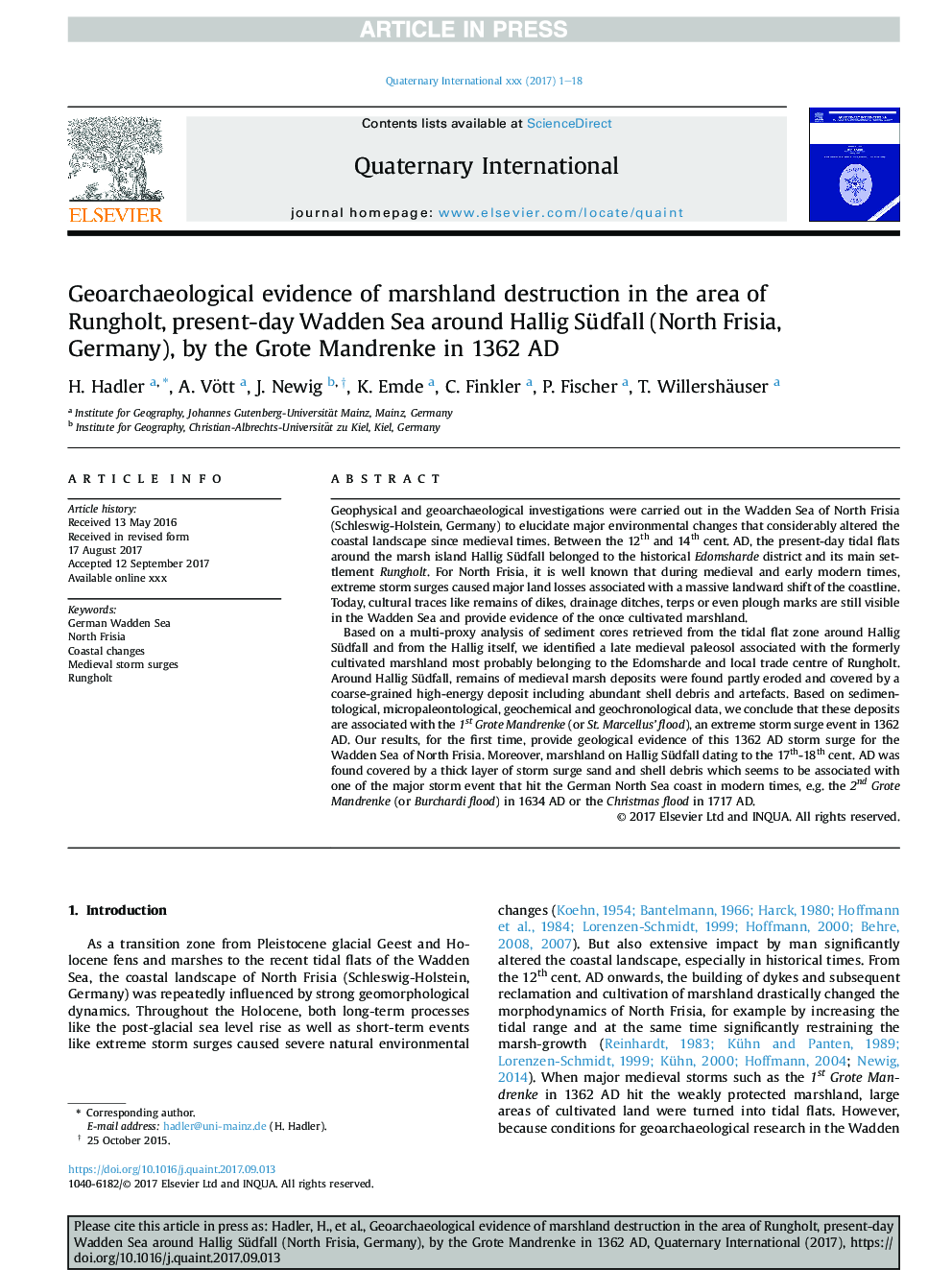| Article ID | Journal | Published Year | Pages | File Type |
|---|---|---|---|---|
| 7449860 | Quaternary International | 2018 | 18 Pages |
Abstract
Based on a multi-proxy analysis of sediment cores retrieved from the tidal flat zone around Hallig Südfall and from the Hallig itself, we identified a late medieval paleosol associated with the formerly cultivated marshland most probably belonging to the Edomsharde and local trade centre of Rungholt. Around Hallig Südfall, remains of medieval marsh deposits were found partly eroded and covered by a coarse-grained high-energy deposit including abundant shell debris and artefacts. Based on sedimentological, micropaleontological, geochemical and geochronological data, we conclude that these deposits are associated with the 1st Grote Mandrenke (or St. Marcellus' flood), an extreme storm surge event in 1362 AD. Our results, for the first time, provide geological evidence of this 1362 AD storm surge for the Wadden Sea of North Frisia. Moreover, marshland on Hallig Südfall dating to the 17th-18th cent. AD was found covered by a thick layer of storm surge sand and shell debris which seems to be associated with one of the major storm event that hit the German North Sea coast in modern times, e.g. the 2nd Grote Mandrenke (or Burchardi flood) in 1634 AD or the Christmas flood in 1717 AD.
Keywords
Related Topics
Physical Sciences and Engineering
Earth and Planetary Sciences
Geology
Authors
H. Hadler, A. Vött, J. Newig, K. Emde, C. Finkler, P. Fischer, T. Willershäuser,
